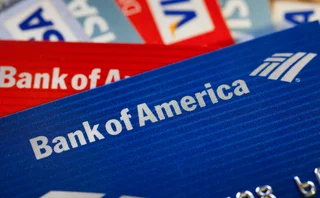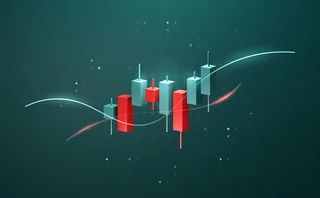Hammer Time – Joel Clark plots the rise in popularity of internet-based auction platforms for the securities lending industry and explains the transparency and competition benefits offered by such systems.
Estimates suggest that the global balance of securities on loan far exceeds $3 trillion. Traditionally a manual process between borrowers and lenders, the latest technology allows lenders to put their securities onto a web-based auction platform and invite bids from potential borrowers. The model competes not only with manual processing but also with some existing platforms, which offer users electronic communication and execution to complete the lending process.
The concept of auctioning exclusive securities lending rights over the Internet has its origins with Boston-based service provider eSecLending, founded in 2000. The company sought to offer an alternative to custodial lenders keeping large pools of supply captive from funds and lending securities out stock by stock.
"Our firm was established on the premise that beneficial owners could improve lending returns if their portfolios were removed from traditional lending pools and were marketed as separate and unique entities," says Chris Poikonen, managing director of auctions and trading at eSecLending.
"The primary difference between our model and the traditional route is that we utilise a competitive bidding process to determine optimal borrower counterparts as opposed to relationship-based trading. We focus on exclusive principal programs, which offer unencumbered access to a portfolio or segment of a portfolio for a defined term."
eSecLending chose to offer this unencumbered access through what was essentially traditional auction, only in the dark. Typically, a website is created that displays information about a lender and its portfolio to an approved broker community. A three-hour auction window is then opened and the brokers are invited to make bids for the assets on behalf of their borrower clients, usually proprietary trading desks or prime brokers acting on behalf of hedge funds.
eSecLending's auction model has been deployed to about 20 lender clients, including the California Public Employee's Retirement System (CalPERS) and the Ohio Public Employees Retirement System (OPERS). "Our primary focus is on blind auctions where the broker-dealers don't know who they're competing against or what bids are being made," says Poikonen.
Although not fundamentally opposed to open auctions, he says that as the market is inefficient with bidders willing to pay vastly different amounts to borrow securities, the blind model is a better way to exploit those inefficiencies.
Offering both open and blind auctions is New York- and London-based vendor EquiLend Holdings, formed in 2000 by a consortium of 10 financial institutions to improve efficiency in the securities lending industry. Over the past two years, EquiLend has delivered AuctionPort to four lender clients to facilitate 10 separate auctions. Most have chosen to run open auctions. "Bidders don't know who else is bidding but they certainly know their bid terms so it tends to get really competitive close to the end of the auction," says Melissa Gow, director of sales at EquiLend.
She adds that the overall popularity of the auction model is growing. "At the beginning, when we rolled out AuctionPort, we weren't really sure what the demand would be," she says. "But since then, auction has become a really hot topic and I think that agent lenders see this as a way to satisfy beneficial owner demand."
Drivers
The main driver for using an auction platform is that it increases transparency in a market that has been known for its faults and inefficiencies. The borrower formerly had to depend on the prime broker's ability to source the right stock to borrow at a good price from a reliable vendor.
"The auction has provided a level of discipline and infrastructure and also a very simple order trail that has been lacking in some one-to-one negotiations," says Chris Taylor, head of the securities finance team at State Street, which has used Equilend's AuctionPort product to facilitate a number of auctions on behalf of its underlying clients seeking to lend their securities. Taylor says that the auction is an attractive route to market for lenders holding special assets for which there is greater demand than supply. "It has to be something special that the demand side will compete for access to," he explains.
One of State Street's most recent auctions was for assets of roughly $15 billion held by investment funds managed by State Street Global Advisors France (SSgA), the French investment management arm of State Street in Paris. "The French funds in question were relatively new to the securities lending market and their investment mandates and securities lending objectives were better suited than most to an auction model," says Taylor.
Aside from State Street's success, there is little doubt that auction is an effective way of automating the securities lending process. Bob McDowall, a senior analyst at TowerGroup, says as the sector has grown, automation became a necessity. "The business has grown exponentially, mainly because of the hedge funds," he explains. "They are very active traders and have been used to borrowing through their prime brokers."
McDowall agrees with market participants that the auction platforms have made the process more transparent. "You can see what's available, you can put in your bid for it and you can see what other bids are," he says. "It takes the onus away from the prime broker and results in greater transparency."
Relying on relationships
However, many lenders and borrowers still prefer to adhere to traditional methods, believing that a relationship-based business may yield better results, despite the inefficiencies of manual processing. "Auction is a route to market within an agency arrangement of which there are multiple routes to market," says Taylor. "I don't anticipate that it will be the dominant one but it's certainly here to stay and it does work for a reasonable number of beneficial owners who are looking for some certainty and have attractive international-orientated portfolios."
Auction is also not the only alternative to manual processing and several service providers offer other electronic routes to market. SunGard's Loanet Centralised Order Routing (LCOR) product is a free interactive messaging network that helps participants submit requests to borrow, lend, and execute the transactions. Launched in 1999, the service is now used by more than 65 borrowers and 50 lenders - mostly broker-dealers, agent lenders and custodian banks.
Meanwhile London-based inter-dealer broker Icap has broken away from these models to introduce its own platform. The i-Sec platform offers screen-based access to the securities lending markets in France, Germany, Italy, Spain, the UK and Japan. Designed by Icap in conjunction with traders from the securities lending market, the system allows borrowers to post bids with the aim of negotiating with lenders, custodians, or other dealers if they don't find what they need, although it still offers full anonymity and price transparency to lenders and borrowers. Four banks have selected to use the platform and another two are set to join soon - naturally, in keeping with the culture of anonymity, none have been named.
Roy Zimmerhansl, head of electronic securities lending at Icap, explains that where other vendors have focused on improving direct bilateral communications between the lender and the borrower, users of i-Sec can see potential trades with more counterparties than they can possibly deal with on a bilateral telephone basis. "This is the platform where they can all come together and have a real clearing house for borrowing and lending needs," he says.
Real results
Whether it is through Icap, SunGard or an auction model, automation has been a growing trend in the securities lending market and has resulted in real increases in efficiency and transparency. "The growth in securities lending over the last few years is quite impressive," says Brad Bailey, senior analyst at the Aite Group. "Increased transparency has given the lenders better returns but there are still a lot of holders of equities who don't know the value of the securities and their best options for lending." If there is a single factor driving an increase in the use of automated securities lending platforms, it is the never-ending quest for transparency in financial dealings. >
Salient points - Securities lending, traditionally conducted through manual processing, has grownexponentially in recent years with a global balance of more than $3 trillion of securities on loan - A number of technology vendors have now started to offer an auction-style platform allowing buy-side firms to automate the process of sourcing bids and offers for securities - Although auction is an efficient model for securities lending, some buy-side firms still prefer manual processing, with its advantages of being more relationship-based |
Only users who have a paid subscription or are part of a corporate subscription are able to print or copy content.
To access these options, along with all other subscription benefits, please contact info@waterstechnology.com or view our subscription options here: http://subscriptions.waterstechnology.com/subscribe
You are currently unable to print this content. Please contact info@waterstechnology.com to find out more.
You are currently unable to copy this content. Please contact info@waterstechnology.com to find out more.
Copyright Infopro Digital Limited. All rights reserved.
As outlined in our terms and conditions, https://www.infopro-digital.com/terms-and-conditions/subscriptions/ (point 2.4), printing is limited to a single copy.
If you would like to purchase additional rights please email info@waterstechnology.com
Copyright Infopro Digital Limited. All rights reserved.
You may share this content using our article tools. As outlined in our terms and conditions, https://www.infopro-digital.com/terms-and-conditions/subscriptions/ (clause 2.4), an Authorised User may only make one copy of the materials for their own personal use. You must also comply with the restrictions in clause 2.5.
If you would like to purchase additional rights please email info@waterstechnology.com
More on Trading Tech
After acquisitions, Exegy looks to consolidated offering for further gains
With Vela Trading Systems and Enyx now settled under one roof, the vendor’s strategy is to be a provider across the full trade lifecycle and flex its muscles in the world of FPGAs.
Enough with the ‘Bloomberg Killers’ already
Waters Wrap: Anthony interviews LSEG’s Dean Berry about the Workspace platform, and provides his own thoughts on how that platform and the Terminal have been portrayed over the last few months.
BofA deploys equities tech stack for e-FX
The bank is trying to get ahead of the pack with its new algo and e-FX offerings.
Pre- and post-trade TCA—why does it matter?
How CP+ powers TCA to deliver real-time insights and improve trade performance in complex markets.
Driving effective transaction cost analysis
How institutional investors can optimize their execution strategies through TCA, and the key role accurate benchmarks play in driving more effective TCA.
As NYSE moves toward overnight trading, can one ATS keep its lead?
An innovative approach to market data has helped Blue Ocean ATS become a back-end success story. But now it must contend with industry giants angling to take a piece of its pie.
BlackRock, BNY see T+1 success in industry collaboration, old frameworks
Industry testing and lessons from the last settlement change from T+3 to T+2 were some of the components that made the May transition run smoothly.
Banks seemingly build more than buy, but why?
Waters Wrap: A new report states that banks are increasingly enticed by the idea of building systems in-house, versus being locked into a long-term vendor contract. Anthony explores the reason for this shift.







